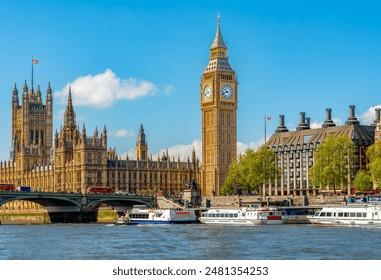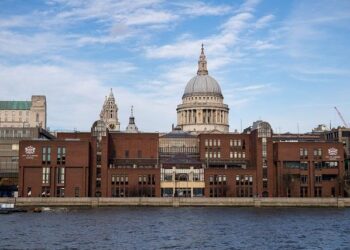The UK government has been urged to urgently reinforce building regulations and infrastructure in anticipation of a 2¬∞C rise in global temperatures, according to a recent report. As climate change projections point to increasing heat risks, experts warn that without immediate action, the nation’s homes and public buildings will face significant challenges in safety, energy efficiency, and resilience. The call comes amid growing pressure to align the UK’s construction standards with the realities of a warming world, ensuring communities are better protected against extreme weather events and rising temperatures.
UK Buildings Face Urgent Retrofit Challenge to Withstand Rising Heat
As global temperatures are projected to rise by 2¬∞C, UK buildings are increasingly at risk from heat stress, prompting calls for immediate, large-scale retrofitting efforts. Experts warn that many structures, particularly those built decades ago, lack the necessary insulation, ventilation, and cooling systems to protect occupants from more frequent and intense heatwaves. Without upgrades, residents could face serious health risks, especially vulnerable groups such as the elderly and young children. The challenge is compounded by the UK’s traditionally temperate climate which has not prioritized heat resilience in building design.
Key retrofitting priorities include:
- Improving natural ventilation and airflow
- Installing reflective roofing materials and shading devices
- Upgrading insulation to moderate indoor temperature swings
- Implementing green infrastructure, like green roofs and walls
| Retrofitting Measure | Estimated Cost (£) | Expected Temperature Reduction |
|---|---|---|
| Ventilation Improvements | £2,000 Р£5,000 | 2-4°C |
| Reflective Roofing | £3,500 Р£7,000 | 1-3°C |
| Green Roof Installation | £7,000 Р£12,000 | 3-5°C |
Experts Warn of Health Risks as Indoor Temperatures Soar Beyond Safety Levels
With temperatures inside homes and offices climbing dangerously above recommended safety thresholds, health professionals are raising urgent concerns about the long-term effects of sustained heat exposure. Vulnerable groups, such as the elderly and those with pre-existing respiratory or cardiovascular conditions, face an increased risk of heat-related illnesses. Experts emphasize that indoor environments, traditionally seen as safe havens during heatwaves, are now becoming hotspots for dehydration, heat exhaustion, and aggravation of chronic diseases.
In response, health authorities are urging landlords, employers, and policymakers to adopt comprehensive cooling strategies to protect public health. Suggested measures include:
- Improved ventilation systems to reduce indoor heat accumulation
- Installation of heat-reflective materials on windows and roofs
- Mandatory cooling centers in residential areas without air conditioning
- Public awareness campaigns focusing on hydration and heat illness symptoms
| Health Risk | Symptoms | Preventive Action |
|---|---|---|
| Heat Exhaustion | Fatigue, dizziness, nausea | Stay hydrated, rest in cool areas |
| Dehydration | Dry mouth, headache, low urine output | Drink water regularly |
| Heat Stroke | Confusion, rapid pulse, unconsciousness | Immediate medical attention |
Government Urged to Implement Mandatory Climate-Resilient Building Regulations
Leading environmental experts and construction industry leaders are calling on the UK government to enforce mandatory regulations that ensure all new and retrofitted buildings can withstand the impacts of a 2°C rise in global temperatures. The urgency is driven by increasing incidents of extreme heat, flooding, and storms, which threaten infrastructure resilience and public safety. Advocates emphasize that adaptive measures such as enhanced insulation, flood defenses, and heat-resistant materials must become standard practice to future-proof the built environment.
Key recommended measures include:
- Incorporation of permeable surfaces to reduce flood risk
- Ventilation systems that adapt to rising temperatures
- Use of reflective roofing materials to minimize heat absorption
- Strengthened structural designs to withstand severe weather events
| Building Component | Climate-Resilience Feature | Benefit |
|---|---|---|
| Roof | Cool roofing materials | Reduces indoor temperatures by up to 5°C |
| Foundations | Flood-resistant barriers | Protects against water damage |
| Walls | Enhanced insulation | Improves energy efficiency |
To Conclude
As the UK faces the mounting challenges of climate change, experts stress that adapting the nation’s buildings to withstand a 2¬∞C rise in global temperatures is no longer optional but imperative. With government officials urged to take urgent and comprehensive action, the decisions made today will shape the resilience and sustainability of the country’s infrastructure for decades to come. The coming years will be critical in ensuring that homes, offices, and public spaces are prepared to endure a hotter future, safeguarding both the environment and public well-being.
















